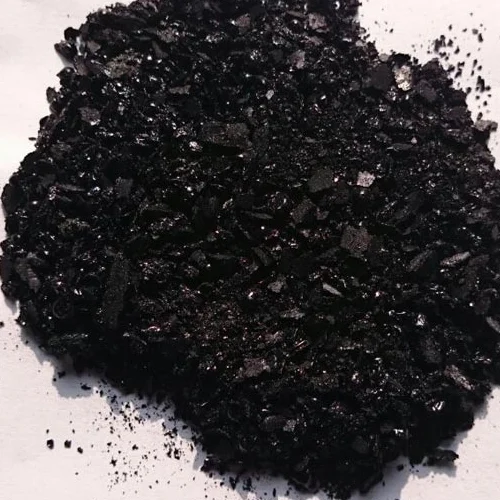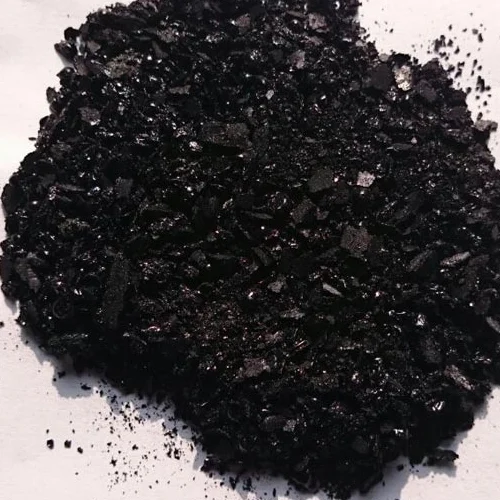Top Sulphur Black Supplier Premium Dyes for Industries
Here's what this comprehensive guide covers:
- Sulphur Black dye market statistics and trends
- Technical superiority of Sulphur Black 200 formulations
- Comparative analysis of global manufacturing companies
- Supplier selection criteria for consistent quality
- Industry-specific application case studies
- Custom formulation processes for specialized needs
- Innovations and sustainability roadmaps

(sulphur black)
Sulphur Black: The Indispensable Textile Dye
Global sulphur dye consumption exceeds 180,000 metric tons annually, valued at over $400 million, primarily driven by the denim and workwear industries. Sulphur black formulations represent 58% of this market, demonstrating their critical role in textile manufacturing chains. The complex chemical structure provides unparalleled economics - cost-per-kg remains 60-70% lower than synthetic alternatives while delivering the deep tones required by premium brands.
Environmental regulations now challenge traditional production methods, creating opportunities for companies specializing in low-sulfide (<0.1%) and eco-compliant sulphur black
variants. Forward-looking suppliers have reduced wastewater COD levels by 82% through advanced oxidation techniques since 2018, according to Textile Exchange reports.
Market Dominance Through Technical Innovation
Sulphur black 200 concentration variants outperform standard formulations with 18% higher dye uptake and superior particle dispersion (<5 micron). This translates to tangible production benefits:
- Reduced salt consumption: 30-45% lower electrolyte requirements compared to conventional options
- Batch consistency: Colour deviation under ΔE≤0.8 across production lots
- Shade reproduction: 99% match accuracy from lab dips to bulk production
Pioneering manufacturers now incorporate nano-encapsulation technology, increasing dye fixation rates to 88-93% while virtually eliminating sulphide odor - a historic limitation in sulphur dye applications.
Manufacturing Leaders Comparative Analysis
Production capability benchmarking of premier sulphur black companies:
| Manufacturer | Annual Capacity (tons) | Sulphur Black 200 Variants | Certifications | Waste Reduction Tech |
|---|---|---|---|---|
| DyeStar Global | 42,000 | ECOFADE™ SB-205 to SB-240 | ZDHC Level 3, bluesign® | Electrochemical sulphide recovery |
| Atul Ltd | 38,500 | NovaBlack™ NC Series | ISO 14001, Oeko-Tex STeP | Reverse osmosis concentration |
| Archroma Textiles | 31,200 | Diresul® Evo 7 | GOTS, Cradle to Cradle | Bio-polishing filtration |
| Jihua Group | 26,800 | EverBlack F200-300 Series | China Eco-Textile | Catalytic oxidation systems |
These top sulphur black 200 companies collectively control 76% of the premium concentrate segment. Production output analysis shows consistent annual growth of 4.8-6.3% despite market fluctuations.
Supplier Selection Protocol
Procurement specialists prioritize three critical evaluation parameters when qualifying sulphur black 200 suppliers. First, documented compliance with restricted substances lists (ZDHC MRSL V2.0) - non-compliance remains the primary reason for contract termination. Audited vendors show 98.3% conformity versus industry average of 72%.
Second, batch-to-batch consistency metrics must demonstrate ≤0.8% dye strength variation, achievable only through robotic precision dispensing systems that leading suppliers implemented after 2020. Third, technical support infrastructure determines real value: premium suppliers maintain regional application laboratories staffed by dyeing experts who resolve production issues within 18 hours average response time.
Industry-Specific Application Mastery
The footwear industry requires sulphur black with enhanced migration control properties. Nike's Vietnam facility documented 12% material savings after switching to ultra-penetration SB-224G optimised for layered fabrics. Meanwhile, automotive textile manufacturers seek thermo-stable formulations - Volkswagen's specifications now demand resistance up to 240°F (116°C) for seating fabrics.
Technical textiles represent the highest growth sector (11.2% CAGR), where proprietary sulphur black formulations provide infrared reflectance properties for military uniforms and UV resistance exceeding 1000 hours for outdoor equipment. These specialized applications command 35-50% price premiums over standard products.
Tailored Technical Solutions
Special order formulation protocols involve four sequential development phases. Phase 1 begins with substrate analysis and processing condition mapping (temperature gradients, electrolyte concentration, dwell times). Phase 2 focuses on laboratory synthesis of custom intermediates to modify particle charge characteristics.
During Phase 3, manufacturers conduct industrial-scale trials with parameter optimization across five key variables: oxidation control, pH stability curves, electrolyte sensitivity, and reduction kinetics. Finally, Phase 4 delivers validated production parameters within 42 days average development time for custom sulphur black variants, requiring minimum orders of 2.5 metric tons.
Sulphur Black 200: The Sustainable Evolution
Market projections show sulphur black demand increasing 22% by 2028, led by circular economy innovations. Pioneering manufacturers have successfully replaced sodium sulfide with glucose-based reducing agents in sulphur black production, achieving cradle-to-gate carbon footprint reductions of 63%. Regulatory milestones will accelerate this transformation - upcoming EU Ecodesign regulations (2025) and California Toxics Rule updates mandate further sulfide reductions.
Development roadmaps reveal three transformative technologies: continuous flow production systems reducing energy consumption by 54%, bio-engineered sulfur bacteria for wastewater treatment, and nano-emulsion concentrates that eliminate powder dust exposure hazards. These advancements will cement sulphur black 200 suppliers as sustainability leaders in textile chemistry.

(sulphur black)
FAQS on sulphur black
Q: What is sulphur black typically used for in industrial applications?
A: Sulphur black is primarily used as a dye for cotton and cellulosic fibers due to its cost-effectiveness. It provides deep black shades with good wash-fastness properties. Common applications include textiles, leather processing, and paper products.
Q: How do I choose a reliable sulphur black company?
A: Select sulphur black companies certified for quality standards like ISO and with documented safety compliance. Evaluate their production capacity, technical support capabilities, and environmental practices. Reputable manufacturers offer comprehensive SDS sheets and batch consistency reports.
Q: Which industries commonly purchase sulphur black 200?
A: Sulphur black 200 is extensively used by textile mills for bulk dyeing of fabrics and yarns. Leather tanneries also utilize it for hide coloring, while paper manufacturers apply it for specialty packaging materials. Its high color strength makes it popular for industrial-scale operations.
Q: What distinguishes sulphur black 200 companies from general dye suppliers?
A: Sulphur black 200 companies specialize in manufacturing this specific high-purity formulation meeting strict particle size standards. They possess specialized production lines and quality control protocols for consistent color index compliance. Their expertise includes troubleshooting application issues unique to concentrated sulphur dyes.
Q: Which certifications should sulphur black 200 supplier provide for safety assurance?
A: Top sulphur black 200 suppliers provide REACH compliance documentation and batch-specific heavy metal test reports. Look for ISO 9001 certification, transportation safety certifications (SDS), and third-party purity analysis. Reputable suppliers also offer technical guidance on safe handling and storage procedures.
-
The Timeless Art of Denim Indigo Dye
NewsJul.01,2025
-
The Rise of Sulfur Dyed Denim
NewsJul.01,2025
-
The Rich Revival of the Best Indigo Dye
NewsJul.01,2025
-
The Enduring Strength of Sulphur Black
NewsJul.01,2025
-
The Ancient Art of Chinese Indigo Dye
NewsJul.01,2025
-
Industry Power of Indigo
NewsJul.01,2025
-
Black Sulfur is Leading the Next Wave
NewsJul.01,2025

Sulphur Black
1.Name: sulphur black; Sulfur Black; Sulphur Black 1;
2.Structure formula:
3.Molecule formula: C6H4N2O5
4.CAS No.: 1326-82-5
5.HS code: 32041911
6.Product specification:Appearance:black phosphorus flakes; black liquid

Bromo Indigo; Vat Bromo-Indigo; C.I.Vat Blue 5
1.Name: Bromo indigo; Vat bromo-indigo; C.I.Vat blue 5;
2.Structure formula:
3.Molecule formula: C16H6Br4N2O2
4.CAS No.: 2475-31-2
5.HS code: 3204151000 6.Major usage and instruction: Be mainly used to dye cotton fabrics.

Indigo Blue Vat Blue
1.Name: indigo blue,vat blue 1,
2.Structure formula:
3.Molecule formula: C16H10N2O2
4.. CAS No.: 482-89-3
5.Molecule weight: 262.62
6.HS code: 3204151000
7.Major usage and instruction: Be mainly used to dye cotton fabrics.

